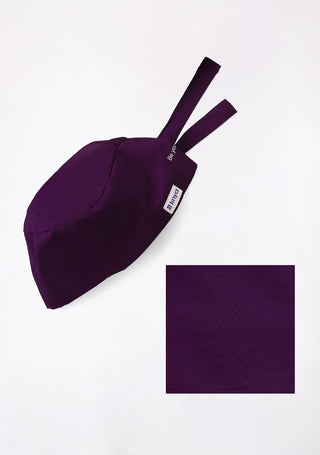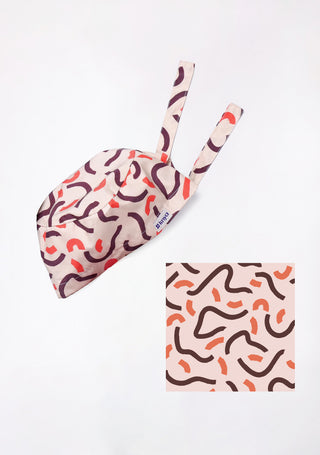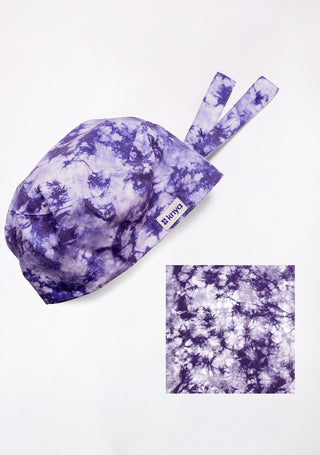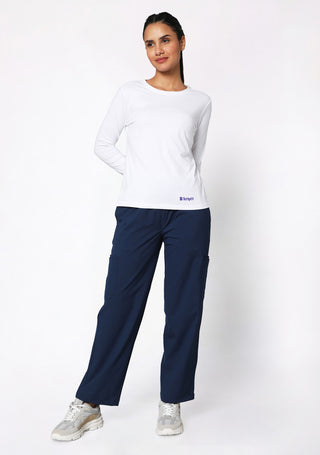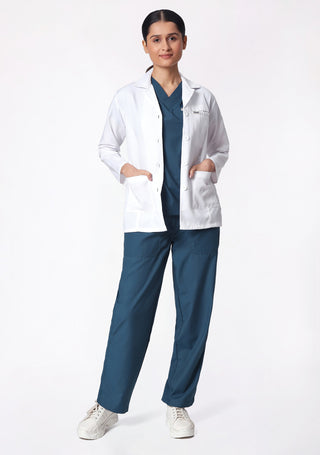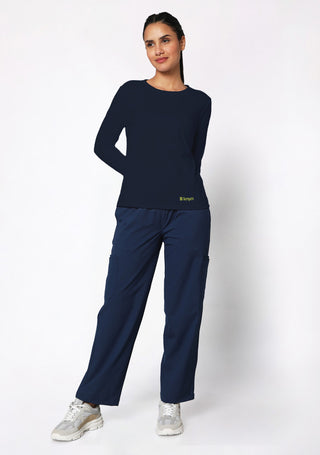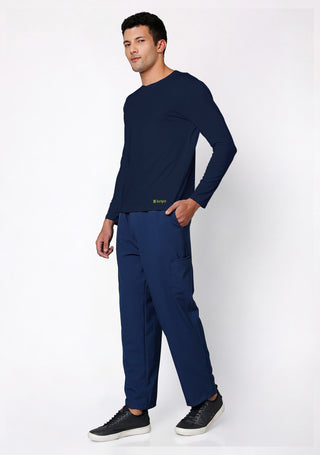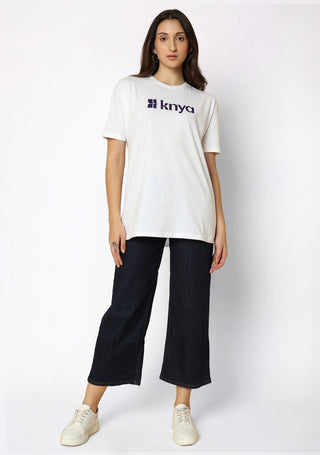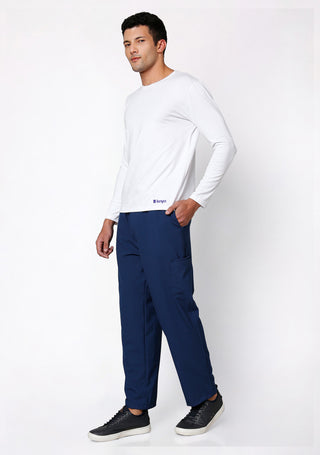Scrubs are the main clothes for people who work in hospitals and clinics. They are made to be easy to move in and not tight. But sometimes scrubs alone don’t keep you warm or give enough support, especially when you work long hours or in cold places. What you wear under your scrubs can help you feel better and work easier.
Why Wearing Something Under Scrubs Matters?
Scrubs look simple, but what you wear underneath can change how you feel all day. If you don’t wear the right clothes under scrubs, you might feel cold, itchy, or uncomfortable. Also, the right undershirt or pants can protect your skin from rubbing or sweat. If you wear something that does not fit well, you may feel distracted or irritated during your shift.
Ready to explore our amazing scrubs collection? Browse the best here
Follow the Rules First
Before you pick clothes to wear under your scrubs, check the rules at your workplace. Some hospitals or clinics do not allow extra layers in places like operation rooms. Sometimes they want you to wear certain colors under your scrubs. This is to keep things clean and professional. So, always check before you buy or wear anything new under your scrubs.
What to Wear Under Your Scrub Top?
Many people like to wear a long-sleeve shirt under their scrub top. This keeps you warm and stops your scrub top from rubbing on your skin. If it’s too hot for long sleeves, a short-sleeve shirt is also good. Try to pick a shirt color that matches your scrub top. This way, your clothes look neat and tidy. If your scrub top has a V-neck, pick a shirt with a V-neck too. If it has a round neck, wear a round neck shirt.
Tank tops are also a good choice, especially when it’s warm. They are light and let air go through easily. You can wear a tank top by itself or under a long-sleeve shirt in colder weather. This way, you stay warm but don’t get too bulky.
What to Wear Under Your Scrub Pants?
You can wear leggings under your scrub pants to stay warm in cold weather. Leggings fit close to your body and do not make your pants look bulky. It is better to choose leggings in colors that go well with your scrubs. Sometimes, people wear thermal underwear if it is very cold. Thermal clothes keep you warm but still let your skin breathe.
Some people wear slim shorts under their scrub pants. These can help support your legs and stop panty lines from showing. Also, wearing thick socks is good if you spend many hours standing on cold floors. Warm feet can make a big difference.
How to Stay Warm During Winter?
Winter is tough for healthcare workers. You have to wear scrubs but also not freeze. Long-sleeve undershirts, thermal leggings, and thick socks help a lot. You can also wear a scrub jacket or lab coat over your scrubs. These outer layers keep you warm and you can take them off when you feel hot.
Click here to explore comfortable lab coats and discover our complete collection of comfortable and stylish medical apparel
The Right Fabric Is Very Important
The fabric you choose for underscrubs can change how you feel a lot. Natural fabrics like cotton and bamboo are good because they let air pass through. This keeps your skin cool. Some synthetic fabrics like polyester and spandex also work well. These often have something called moisture-wicking. That means they pull sweat away from your skin so you stay dry.
If you move a lot during your shift, it is best to pick undershirts and leggings made of moisture-wicking fabric. This keeps you from feeling sticky or wet.
More Benefits of Wearing Underscrubs
Underscrubs are not only for warmth. They also stop your scrub clothes from rubbing your skin. This can help avoid skin irritation. Underscrubs also protect your skin from spills and stains. If something like blood or other fluids splash on you, the undershirt or leggings keep them away from your skin.
When you wear underscrubs, changing in and out of your scrubs becomes easier. It is also more comfortable to sit, bend, or move in your scrubs if you have a soft undershirt.
Tips to Choose the Best Underscrubs
When picking underscrubs, find the right size. Clothes that are too big or too small will not feel good. Choose undershirts and leggings that fit close but are not tight. Make sure the fabric feels soft on your skin.
Also, pick colors that do not show through your scrubs. This keeps your look clean and professional. If you wear dark scrubs, pick dark undershirts. For light-colored scrubs, pick light undershirts.
Buying underscrubs from trusted brands like Knya can help you get clothes that last and feel good all day.
Conclusion
Wearing the right clothes under your scrubs can make your workday better. It keeps you warm, dry, and comfortable. It also helps protect your skin from rubbing and spills. Always check your workplace rules before choosing underscrubs. Pick clothes made of soft, breathable fabric that fit you well. Layering with a long-sleeve shirt, leggings, or tank tops can make a big difference, especially in cold weather. Investing time and care into what you wear under your scrubs will help you feel ready and strong during long shifts. Remember, comfort is key to doing your best every day.

